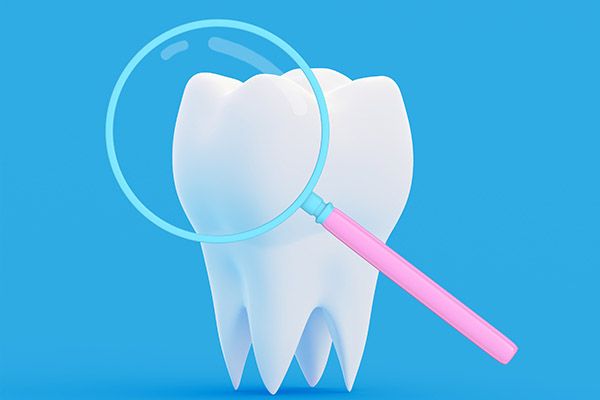Dental Services Upland, CA
Most people need a wide range of dental services during their lifetime. Dental emergencies can arise without warning and can leave lasting damage. Repairing cracked, broken, or infected teeth may require complex care. Many dental patients also wish to improve the appearance of their smile. Dental services can range from basic to specialized care, as well as a range of cosmetic procedures.
Dental services at Upland Dental Group And Implant Center in Upland can help keep your mouth healthy. Our team offers general dentistry, including checkups and cleanings. We treat mouth injuries, tooth decay, and other common dental concerns. Call us today at (909) 660-6080 to schedule an appointment or learn more about our services.
Emergency Dental Services
During a dental emergency, each second counts. Do not delay in seeking care. Instead, contact a dental provider right away. Dental emergencies can include:
- Knocked out or loosened teeth
- Cracked or broken teeth
- Abscessed teeth
- Severe mouth bleeding
- Lost or damaged oral appliances
- Severe dental pain
A qualified dental provider can determine how to handle the emergency. If the issue cannot wait until the next business day, the provider may schedule an after-hours appointment. In some cases, the provider may direct the patient to the nearest emergency room. If a patient needs hospital care, the provider can schedule a follow-up appointment. The dental team provides ongoing care to make sure the issue is resolved.
“A qualified dental provider can determine how to handle the emergency.”
Checkups and Routine Care
The American Dental Association recommends dental checkups every six months. During a checkup, dentists examine the teeth for signs of decay. They assess the patient's gum health and look for signs of oral cancer. Sometimes providers may take an X-ray or perform other imaging tests. Imaging tests can reveal problems lurking below the gumline.
Checkups typically include a thorough professional dental cleaning and keep mouths clean, fresh, and healthy. Biannual cleanings fight decay by removing plaque and tartar. These substances can trap bacteria against the tooth and gum line. Patients who skip their dental cleanings may be at risk for cavities or gum disease.
“Professional cleanings keep mouths clean, fresh, and healthy.”
Cosmetic Services
Many dental practices offer a range of cosmetic services, including teeth whitening, tooth replacements, and gum reshaping or contouring. Today, many patients are eager to achieve a brighter smile. Professional whitening treatments erase stubborn stains, including those embedded within tooth enamel. Patients who are not satisfied with over-the-counter treatments may opt for professional whitening.
Cosmetic dentistry services also include crowns, implants, bridges, and veneers. These treatments repair cracked, chipped, or worn-down teeth. Implants and bridges replace missing teeth altogether. These treatments can prevent long-term dental damage and restore the smile.
Gum reshaping can enhance a patient's appearance, too. This treatment alters the gums and produces a whole new smile. However, not every dental office is equipped to provide cosmetic services. Our dental team can provide a full list of the services that we offer.
“Cosmetic dentistry services also include crowns, implants, bridges, and veneers.”
Check out what others are saying about our dental services on Yelp: Dental Services in Upland, CA
Orthodontic Services
Orthodontic services provide both cosmetic and functional purposes. Many patients turn to orthodontics for a straighter smile. Repairing crooked or misaligned teeth can also improve mouth function. Without treatment, some orthodontics issues may place oral health at risk. Fixing these issues ensures that the teeth and gums stay healthy.
Not every dental provider offers orthodontic care. General dentists must undergo specialized training before they can perform orthodontic treatments. Contact our office to learn more about orthodontic services and referrals.
“Orthodontics serve both a cosmetic and functional purpose.”
Questions Answered on This Page
Q. What is a dental emergency?
Q. What happens during a dental checkup?
Q. What is cosmetic dentistry?
Q. What technology does my dentist use?
People Also Ask
Q. How often should someone have a dental checkup?
Q. Why does the dentist use fluoride mouthwash in the cleaning?
Q. What are some of the reasons one might need a tooth extraction?
Q. Can sealants protect against cavity-forming bacteria?
Dental Technology and Other Services
Today, dental providers frequently use technological tools. Due to a growing demand for telehealth, many dentists offer virtual visits and online patient portals. These services can streamline the treatment process and boost accessibility. Patient portals keep important information at your fingertips, and virtual visits cut down on travel time.
Some practices also feature on-site dental labs, including 3D printers. Patients might also encounter digital check-ins or intraoral cameras and televisions in each exam room. These services can speed up office appointments and make dental care more comfortable. Our office team can provide more details about dental tech.
“Patient portals keep important information at your fingertips, and virtual visits cut down on travel time.”
Frequently Asked Questions
Q. How can I determine if I have a dental emergency?
A. When in doubt, call your dentist. The office team can provide guidance over the phone. If necessary, the team can schedule an urgent appointment for the appropriate dental services.
If you experience severe pain or uncontrolled bleeding, go straight to the emergency room. Dental emergencies can worsen quickly, so do not delay seeking care. Seek medical help as soon as possible.
Q. What are my options for replacement teeth?
A. A missing tooth can be uncomfortable and unsightly. Fortunately, you have several treatment options. A wide range of dental services can replace or repair damaged teeth, but before making a decision, your provider will conduct an exam.
The dental team will consider the size, shape, and overall health of your mouth. Costs and coverage options may vary, and you may need to contact your insurance for more details. Your provider can help you weigh your options and make a decision.
Q. What happens during a dental checkup?
A. During a routine checkup, your provider will conduct a visual exam. They might use mirrors or picks to check your teeth. Sometimes, you might also receive an X-ray. If the exam reveals a problem, your dentist explains your treatment options.
Checkups usually include a professional cleaning, too. First, the provider clears away plaque and tartar. They apply a gritty toothpaste to polish the teeth. Next, they floss your teeth and rinse your mouth. This in-depth cleaning helps reduce your risk of dental problems. Cleanings are a good time to discuss other dental services, like teeth whitening.
Q. Can I receive orthodontic care from my family dentist?
A. Some general dentists are qualified to provide orthodontic care, but not every provider offers these dental services. Contact your provider to ask about specialized services like orthodontics.
Q. What are my options for teeth whitening?
A. Many dentists offer professional teeth whitening. Options may include in-office laser whitening or take-home whitening trays. These dental services may not be safe for every patient, and they might not be available at each practice. Contact your provider to learn more about professional whitening treatments.
Dental Terminology
Call Us Today
Dental services can vary, and each practice has its own approach to technology and patient care. Every general dentist can offer routine checkups and cleanings. If you need specialized care, look for a practice that offers specialized services and advanced techniques. If you are searching for a new dental provider, let Upland Dental Group And Implant Center in Upland deliver the care you need. Call us at 909-660-6080 to learn more about our services and policies.
Helpful Related Links
- American Dental Association (ADA). Glossary of Dental Clinical Terms. 2024
- American Academy of Cosmetic Dentistry (AACD). Home Page. 2024
- WebMD. WebMD’s Oral Care Guide. 2024
About our business and website security
- Upland Dental Group And Implant Center was established in 2016.
- We accept the following payment methods: American Express, Cash, Check, Discover, MasterCard, and Visa
- We serve patients from the following counties: Los Angeles County, San Bernardino County and Riverside County
- We serve patients from the following cities: Upland, La Verne, San Dimas, Rialto, Pomona, Claremont, Montclair, Fontana, San Bernardino, Rancho Cucamonga, Ontario, Hesperia and Apple Valley
- Norton Safe Web. View Details
- Trend Micro Site Safety Center. View Details
Back to top of Dental Services













